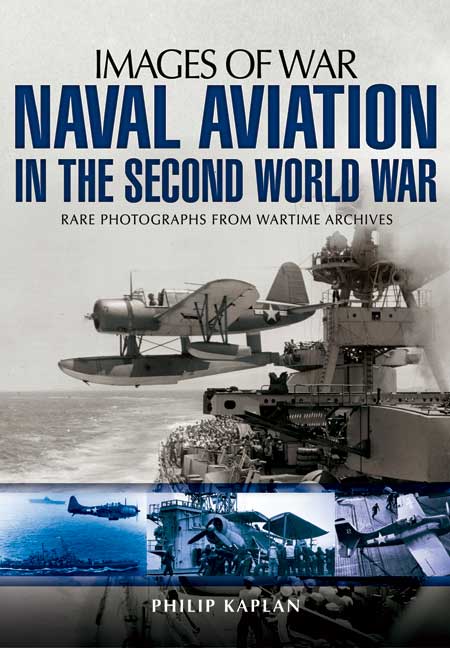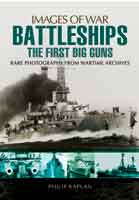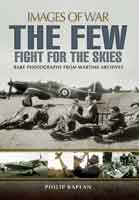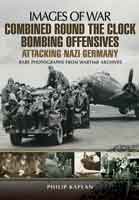Naval Aviation in the Second World War (Paperback)
Imprint: Pen & Sword Aviation
Series: Images of War
Pages: 160
ISBN: 9781781593691
Published: 30th October 2013
(click here for international delivery rates)
Need a currency converter? Check XE.com for live rates
| Other formats available | Price |
|---|---|
| Naval Aviation in the Second World… ePub (55.2 MB) Add to Basket | £6.99 |
The first aircraft carriers made their appearance in the early years of World War I. These first flattops were improvised affairs built on hulls that had been laid down with other purposes in mind, and it was not until the 1920s that the first purpose-built carriers were launched, but no-one was as yet clear about the role of the carriers and they were largely unloved by the 'battleship admirals' who still believed that their great dreadnoughts were the ultimate capital ships.
World War II changed all that, At Taranto, Pearl Harbour, and in the North Atlantic, the carrier, the ugly duckling of the world's navies, proved itself to be the dreadnought nemesis. As the tide of war turned, the fast attack carriers of the U.S. Navy spearheaded the counter-attack in the Pacific while the makeshift escort carriers helped to seal the fate of the German U-boats in the Atlantic. The carrier, and naval aviation, thus emerged into the post-war world as the primary symbol and instrument of seapower; it would play a crucial role in the strategic encirclement of the Soviet Union and enabled western airpower to be rapidly and effectively deployed in areas of conflict as remote as Korea, Vietnam, the Falklands and the Gulf.
Kaplan describes the adventure of the young American, British, and Japanese naval aviators in the Second World War. It is an account of their experiences based on archives, diaries, published and unpublished memoirs, and personal interviews with veteran naval airmen of WWII, providing a vivid and often hair-raising picture of the dangers they encountered in combat and of everyday life aboard an aircraft carrier. It considers some of the key aspects of the WWII naval aviator's combat career, such as why it was that only a tiny minority of these pilots – those in whom the desire for aerial combat overrode everything – accounted for such a large proportion of the victories.
In the major carrier actions of that conflict, from the Royal Navy's attack on Taranto which crippled the Italian fleet in 1940, to the Japanese carrier-launched surprise attack on U.S. Navy battleships and facilities at Pearl Harbour in 1941, to the carrier battle of Midway in 1942, and the Great Marianas Turkey Shoot of 1944, through the Japanese Kamikaze campaign against the U.S. Carriers in the final stages of the Pacific war, this book takes the reader back to one of the most exciting and significant times in modern history.
Kaplan’s book is really accessible and eloquent. It lets the reader become acquainted with the early carriers and their development, their significance in warfare in general and their value during the course of WWII. Being a sibling of parents who suffered from German occupation, my interest in and reading about WWII has made me well aware of how important navy aviation and aircraft carriers have been to finally win this war.
Aviation Book Reviews
Throughout the book is well-illustrated with archive photos. Among them are a fair number of more modern images, showing more modern aircraft and ships on top of WW2 content. All are well captioned and add to the information in teh amin text. It is written in a very readable style, common to other titles by the same author.
Military Modelling
The first aircraft carriers made their appearance in the early years of World War I. These first flattops were improvised affairs built on hulls that had been laid down with other purposes in mind, and it was not until the 1920s that the first purpose-built carriers were launched, but no-one was as yet clear about the role of the carriers and they were largely unloved by the 'battleship admirals' who still believed that their great dreadnoughts were the ultimate capital ships. World War II changed all that.
The Pegasus Archive
The carrier, and naval aviation, thus emerged into the post-war world as the primary symbol and instrument of seapower; it would play a crucial role in the strategic encirclement of the Soviet Union and enabled western airpower to be rapidly and effectively deployed in areas of conflict as remote as Korea, Vietnam, the Falklands and the Gulf. Kaplan describes the adventure of the young American, British, and Japanese naval aviators in the Second World War. It is an account of their experiences based on archives, diaries, published and unpublished memoirs, and personal interviews with veteran naval airmen of WWII, providing a vivid and often hair-raising picture of the dangers they encountered in combat and of everyday life aboard an aircraft carrier. It considers some of the key aspects of the WWII naval aviator's combat career, such as why it was that only a tiny minority of these pilots - those in whom the desire for aerial combat overrode everything - accounted for such a large proportion of the victories. This book takes the reader back to one of the most exciting and significant times in modern history.
About Philip Kaplan
Philip Kaplan is a Californian author and art-director who now lives in Cheltenham with his English wife, also an author. He has a long-standing fascination with aviation and naval history and has had ten previous books published by Abbeville, Cassell, Random House and Aurum. To date his books have sold well over a quarter of a million copies world-wide.

























